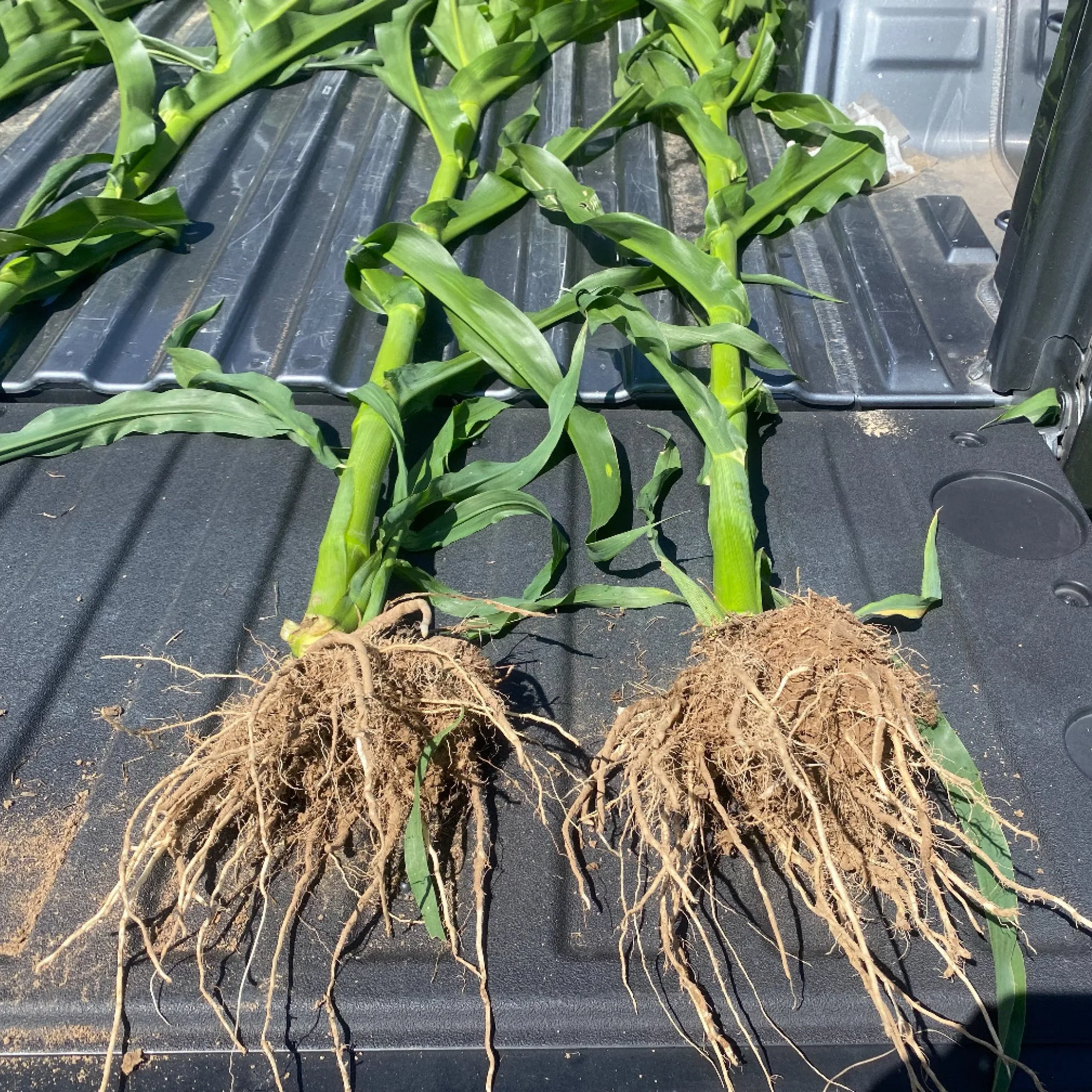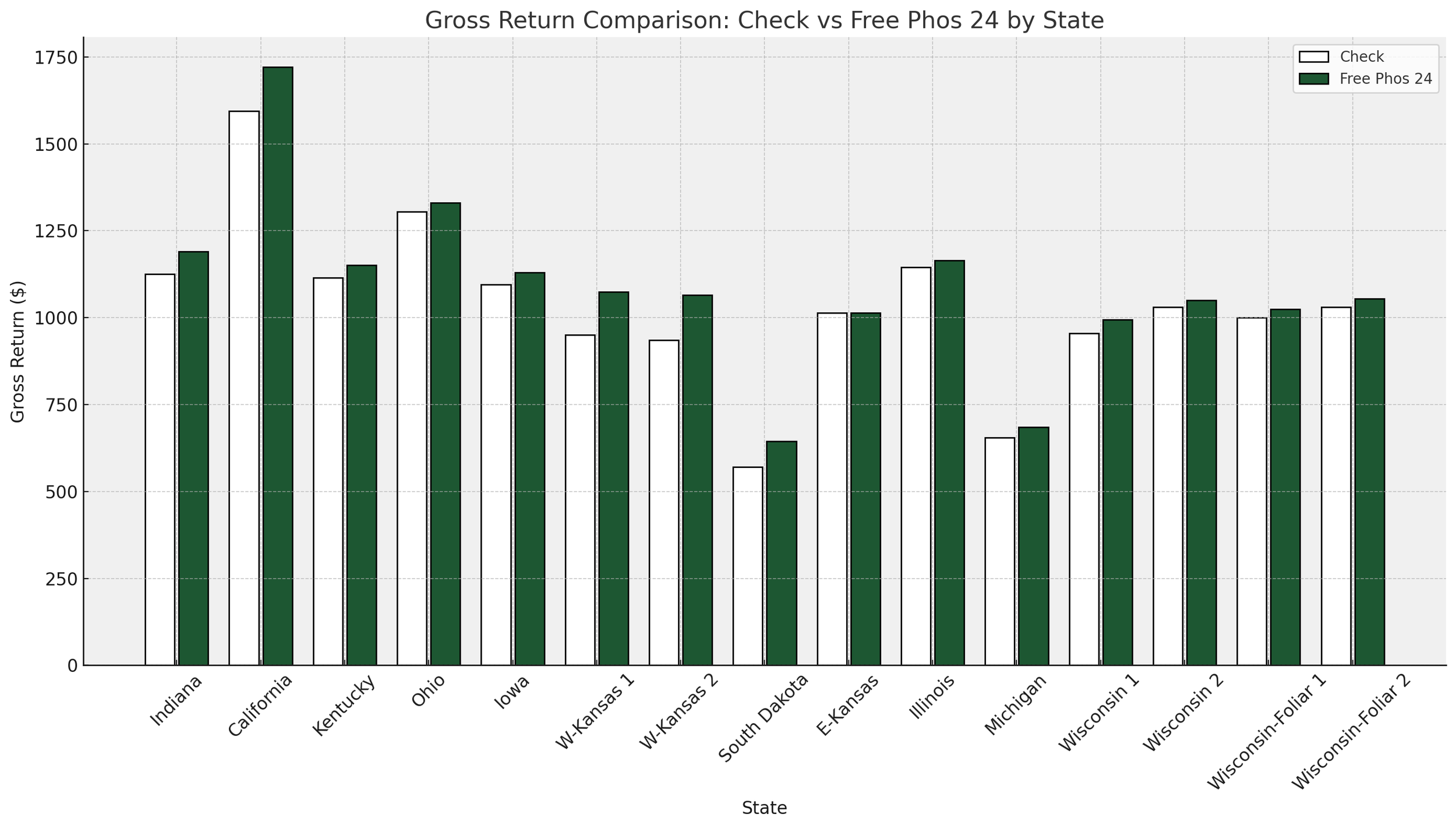Improving Yield Potential: Understanding Foliar-Applied Phosphate
When most growers consider a phosphate, they typically do not consider it a candidate for foliar feeding. In standard practice and like many of the trials we conducted on corn throughout 2023, most phosphate is applied before planting in the form of a dry phosphate applied to the field or when planting in a starter mix. In recent years, that practice has come under challenge.
Foliar-applied phosphate has been trialed for years as a potential way to address in-season phosphate deficiency, but rarely successful in corn. Research universities like Iowa State University, and Oklahoma State University, examined foliar-applied phosphate with mixed results in the early 2000's.
Iowa State University Department of Agronomy member John Sawyer, in a 2009 article, indicated that the university had not found a statistically significant increase, but a decrease in production of 5-6 bushels/acre in a 1999 trial on corn using a mono-potassium phosphate application.
In the early 2000s, Oklahoma State University also performed similar trials on wheat, but in 2003, their trials showed that phosphate applied at stage VT showed a 15% forage quality increase over phosphate applied at other stages. Yet again, like Iowa State University, other trials at Oklahoma State indicated a lack of crop response to foliar-applied phosphate.
With years of foliar-applied phosphate trials in other crops using Free Phos 24, CultivAce established several trials throughout 2023 to find our efficiency in corn from a statistical level. Our goal was to find the potential corn response to what our foliar-applied phosphate fertilizer could do, and if it could make a statistical difference. Of course, with any trial, the consideration of cost for the grower was crucial, application and product quantity had to be cost-effective for the grower.
We conducted four, on-farm trials in Kentucky, Illinois, and Wisconsin, collecting tissue samples after application and comparing treated versus untreated acres. And yes, finally, and most importantly, we collected yield monitor data as well.
Kentucky Foliar Applied Phosphate Trial
In Kentucky, the grower found a significant increase of 8 bushels per acre over the untreated check. They applied our Free Phos 24, which is an 8-24-0 at a rate of just 1 gallon per acre at the V4 growth stage. In this application, the grower treated 20 acres of the field with Free Phos 24 with the entire field receiving 6 gallons per acre of 10-34-0 at 6 gallons per acre in a 2x2 mix.
Illinois Foliar Applied Phosphate Trial
In Illinois, treating 40 acres of an 80-acre field with Free Phos 24, the grower saw a tissue concentration increase of 35% over the untreated acres. Using just 1 gallon of Free Phos 24 per acre at the V4 growth stage, the treated field received a 4 bushel per acre yield increase. The entire field received a Spring-applied dry phosphate according to a soil test. Tissue samples were pulled at the V6 growth stage where the grower saw the treated acres with Free Phos 24 tested "Sufficient" while the untreated acres were notably deficient.
Wisconsin Foliar Applied Phosphate Trial
We conducted 2 on-farm trials in different areas of Wisconsin, Colfax, and Independence. With different fields, application rates, varieties, and grower variables, Free Phos 24 was able to provide an encouraging and consistent 11% increase in phosphate levels for both growers, despite the variables.
Grower Standard - Left | Free Phos 24 - Right
In Colfax, Wisconsin, the grower applied just 2 quarts of Free Phos 24 per acre to half the field. This grower had two different varieties in the field one being a hybrid. Free Phos 24 was applied at V4, with tissue sampling done at V12. Finding a 5-bushel increase in the hybrid variety and a 6-bushel increase in the other variety, the grower was able to find an 11.5% higher concentration of phosphorus on the foliar-applied acres.
For the trial in Independence, Wisconsin, the grower applied Free Phos 24 to 20 acres of a 40-acre field, this time, treating with 1 gallon of Free Phos 24 per acre, applied as a foliar, again at V4. Tissue samples in this trial were pulled at R2. Free Phos 24 showed an increase of 5 bushels per acre above the check. Tissue analysis indicated again an 11% increase in phosphorus concentration in the treated acres vs. untreated acres.
Why is Free Phos 24 getting improved results?
Free Phos Trial Results by state - In-Furrow & Foliar
It seems more clear that the 2023 trial work indicated that foliar-applied phosphate at the V4 stage can consistently increase yield. What sets Free Phos 24 apart is its multifaceted approach, acting as both a fertilizer and a biostimulant. By combining fertilizer, fulvic acid, and beneficial biology, Free Phos 24 enhances phosphate uptake and utilization, ultimately leading to improved yields.
Each application of Free Phos 24 resulted in a positive ROI for the grower, which coincidentally mirrored the results of our other 2023 Free Phos 24 trials. By applying Free Phos 24 alongside the post-emergence herbicide application around the v3-v5 growth stage which was the case in all 4 of these mentioned trials, the grower can consistently gain yield by applying an optimal 2-4 quarts of Free Phos 24 per acre when already going over the field.
Due to the low cost-to-value ratio, if historical tissue reports indicate a deficiency or suboptimal levels, this practice should be seriously considered for adaptation. As with all new product applications, testing practice on your soil is the best way to see if it will pay off for you. We always encourage them to conduct soil testing for their crops.
For those considering foliar-applied phosphates, Free Phos 24 could prove to be a valuable addition to your crop management practices. Along with prior trial history, along with our in-furrow corn trials in 2023, Free Phos 24 has shown its efficiency in modern corn production. For those interested, CultivAce manufactures an entire line of foliar fertilizers and collaborates with distributors nationwide, providing support and guidance for growers interested in optimizing their yields through innovative solutions. Feel free to reach out with any inquiries!
Resources
2009 Foliar Fertilization on Corn and Soybean - Iowa State University
https://crops.extension.iastate.edu/cropnews/2009/07/foliar-fertilization-corn-and-soybean
Effect of Foliar Application of Phosphorus on Winter Wheat Grain Yield, Phosphorus Uptake and Use Efficiency - Oklahoma State University
https://nue.okstate.edu/Index_Publications/Foliar_P_Wheat.htm
Free Phos 2023 Corn Trial Research




